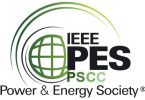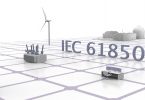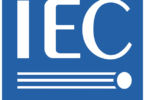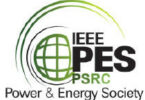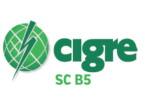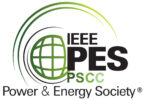by Christoph Brunner, it4power, Switzerland
There is much going on, but we have also been able to accomplish some significant work in 2019
I am still occasionally surprised by how fast time flies. I have the feeling I just wrote the last column, but Alex is already pushing me to write the new one. In November, it will become 25 years since we started IEC 61850 officially. There are not that many members left in the working groups that were involved from the very beginning – and those that are left have grey hairs (if they still have hairs). But the good news, and the proof that IEC 61850 is a living standard, is, that we have many new and young members. Many of these younger members are leading, or are involved in task forces related to new activities around IEC 61850.
As you know – this first column of the year is always an overview on where we are with the standard. As I am writing this, I am in the plane on my way back home from an IEEE PSRC meeting in Jacksonville, Florida, a DistribuTech in San Antonio, Texas, a WG 17 Meeting in Houston, Texas and a WG 10 Meeting in Golden, Colorado. At all these events, IEC 61850 was a topic (what is obvious for the WG 10 and WG 17 meetings). What I noticed is, that we are obviously entering a time, where IEC 61850 for substations gets more attention in the US – and this is mainly fully digital substations – and where IEC 61850 for DER is getting attention from government organizations.
We have reached one significant milestone early February: The Ed 2.1 of part 7-2, 7-3, 7-4, 8-1 and 9-2 have finally been published! There are various reasons why they were delayed, but finally, they are published. This may be the place for some explanations: Officially, they are an Amendment to Ed 2 of the standard. So, the official publication is a document, that tries to describe the changes to be applied to the Ed 2 document. That is hard to read in our case as due to the change to have auto generated word document, changes in structure exist as well. I recommend to you, that you get the consolidated version, which is the document that incorporates all the changes. That is the Ed 2.1 version.
What else happens? We progressed some key documents to the final stage:
- The part 10-3 about functional testing is ready to be circulated as DTR (that is as of end of February while I am writing this column; by the moment you read it, it may already be circulated)
- The part 90-11 about logic modelling is finalized and will be published as TR shortly
Those are two important elements of IEC 61850 on which we have been working for quite a while now, that are finally ready or close to be ready for publication. The part 10-3 should clarify the way how to do testing in a live system, which is of key importance for fully digital substations. The part 90-11 will significantly enhance interoperability of logic design – mainly for a top-down engineering of a system.
- The part 90-4 and 90-12 (guidelines for network management) have been revised and are close to publication as Ed 2 as well
- Related to communication aspects, we recently could circulate a first DC of the part 90-13, dealing with deterministic network topologies and a first DC of 90-22, dealing with network auto routing.
- About new models, we had a first DC circulated for alarm handling (90-18), traveling wave-based fault location (90-21) and a second DC for FACTS (90-14). The title of the part 90-14 will be changed to reflect that it includes as well HVDC and power conversion
- Regarding the Ed 2.1 of the core parts, part 7-1 is about to be published as FDIS (IEC is still working on it); also, parts 4 and 5 are ready
- Then, we will have some new parts to be circulated. Part 7-5 explaining some basic concepts of IEC 61850 is one part we already worked for a while and which shall now be circulated as a CD. Part 6-100 describing aspects of function modeling in SCL. And part 90-19 dealing with role-based access – an important element to implement security.
This may be the place to make some clarification about procedures. In the past, draft documents for planned technical reports that were not yet ready to be voted (which is the DTR), were published as DC (Document for comments). Based on recent information from IEC, such documents can now also be circulated as a CD.
- The part 6-2 on HMI configuration is planned to be circulated as 2nd CD end of March.
- From WG 17, we are about to circulate Ed 2 of IEC 61850-7-420. This document has made significant progress. It is now focusing in the grid or aggregator view of DERs. Models include the parameters of grid codes and a generic view of the DER. I recently created a profile of IEC 61850 for DER supporting IEEE 1547. The US National committee plans to issue a new work item for that.
- In WG 17, besides working on modeling of DER with thermal components (90-27), we started working on microgrids (90-23)
- WG 18 finally is working on the revision of part 7-410 for hydro power plants
So – overall, there is much going on, but we have also accomplished some significant work.
Biography
Christoph Brunner is the President of his own independent consulting company it4power LLC based in Switzerland. He has over 25 years of experience with knowledge across several areas within the Utility Industry and of technologies from the Automation Industry. He has worked as a project manager at ABB Switzerland Ltd in the area of Power Technology Products in Zurich / Switzerland where he was responsible for the process close communication architecture of the automation system. He is Convener of WG 10 of the IEC TC57 and is a member of WG 17, 18 and 19 of IEC TC57. He is senior member of IEEE-PES and IEEE-SA. He is an IEEE Fellow and is active in several working groups of the IEEE-PSRC and a member of the PSRC main committee and the subcommittee H. He is advisor to the board of the UCA international users group.



